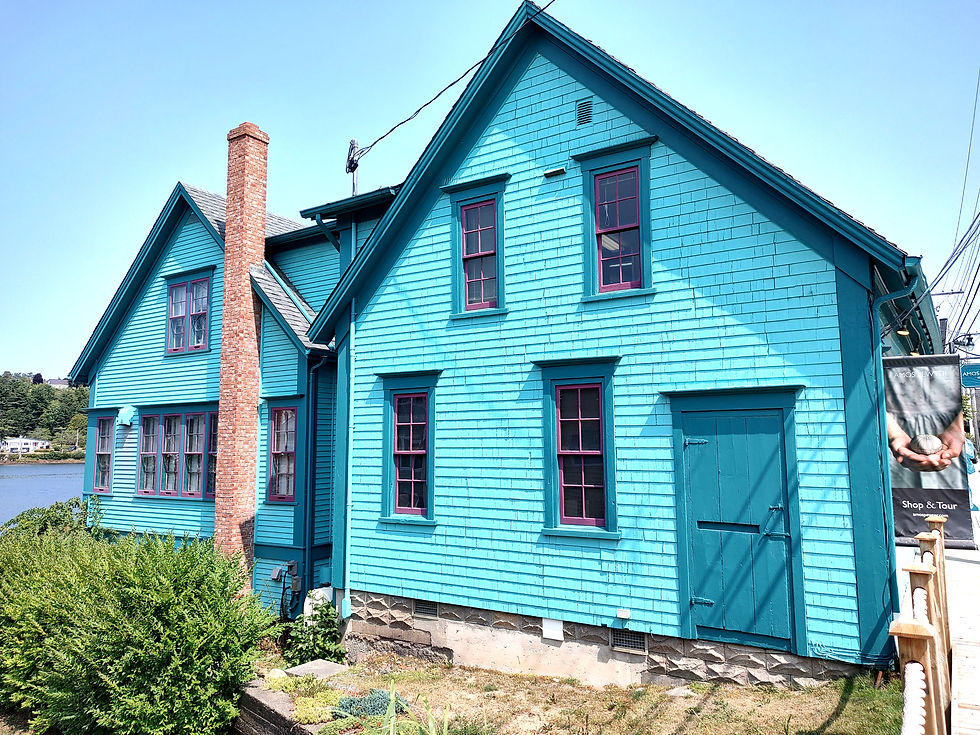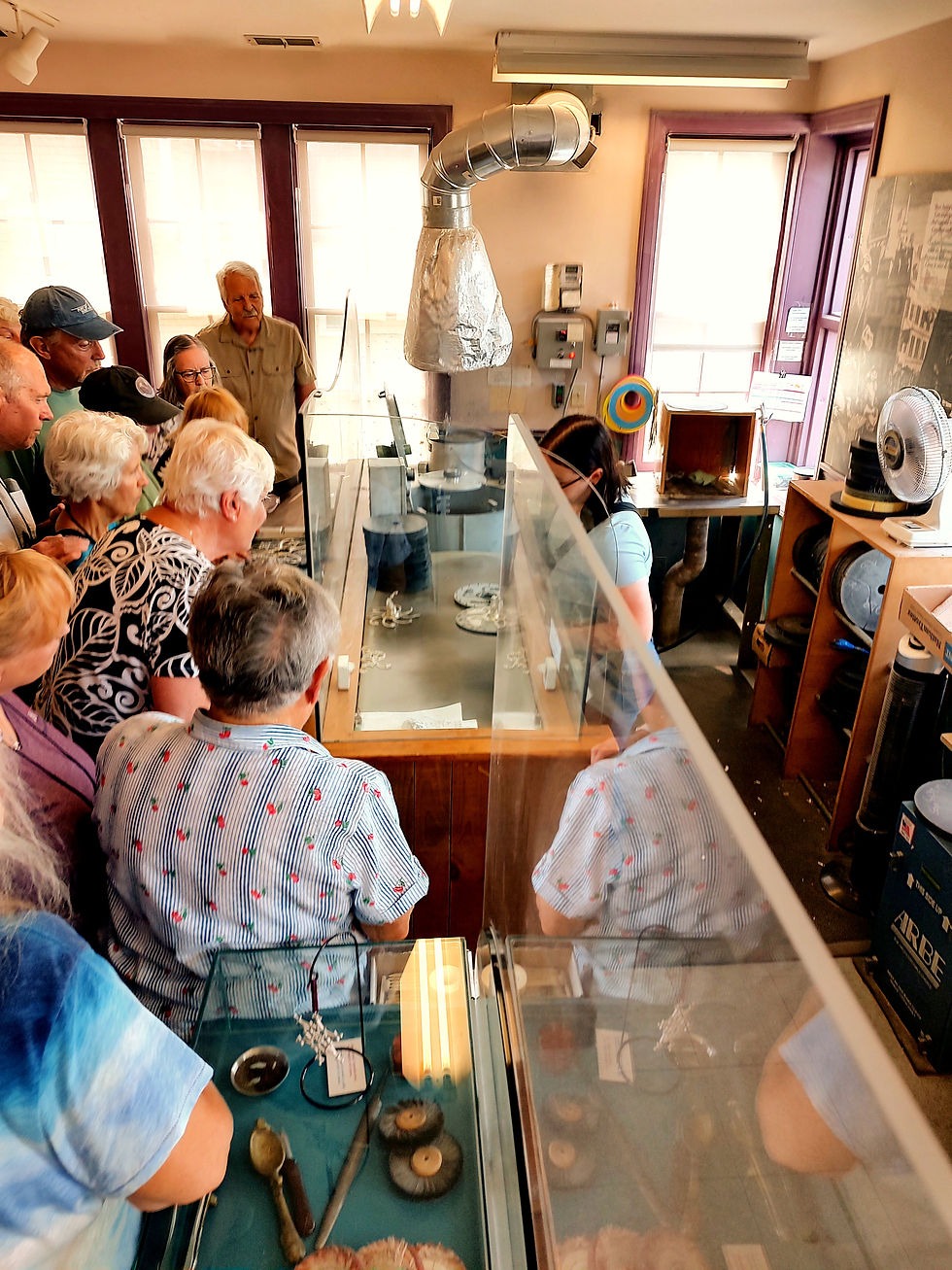Lunenburg, NS
- jsbergauer1
- Aug 19
- 3 min read
Updated: Aug 20
An easy days drive brought us to the seaside town of Lunenburg, home of the Amos Pewter Co., and the Fisheries Museum of the Atlantic. After we sat up and unhooked, we made our way to the Amos Pewter Co. to a quick demo and a chance to work a piece of Pewter.

This is the headquarters of the Amos Pewter Co. There show room and production facility is inside and has been since the start of the company in 1974. The designers and shipping are housed next door in a yellow building like this one.
Pewter is a metal combination of tin, copper and bismuth. It melts around 450 degrees and is mostly used for jewelry and figurines. Pewter of old often had lead which is not used today for obvious reasons. The company buys the pewter by the ingot, melts it in an industrial version of the kitchen crock pots and casts it in rubber type molds made from a rubber similar to tires. The designers will use their own designs, items found in nature, such as a 1 year old lobster that is cast then soldered on to a knife for a cheese knife or shells and sticks. We were showed how pewter can be poured molten on a room temp steel work bench and immediately picked up with a gloved hand and will remelt in seconds once placed back in the melting pot.

Our group watching the cast station as she removes the pewter pieces we will work from the rubber mold. She will place the top and bottom half of the mold into a centrifuge that will heat it up and then pour a ladle of molten pewter into the center. This spinning process will evenly distribute the metal. She will stop the machine, separate the mold and remove the pewter wheel where she will clip off the intended pieces for finishing.

This lady is working the finishing area. She will sand, wire brush, and buff the pieces passed to here from the casting area. From here, if needed, it will go to the soldering area to be attached and then buffed out. She has been working at Amos for 5 years and at another pewter business for a previous 5 years.

From the Amos catalog, here is an example of pewter that was cast from sticks, shell and starfish, then soldered. It is a salad serving set. They have 100's of designs. The designers and the production team are all talented.
We were tired after our drive and pewter demo, so we grabbed a bite to eat at the Naked Oyster restaurant right next door, of course we had seafood!

Why yes, we are eating our way around the Canadian Maritime Provinces! Lobster croissant, one half dozen PEI and Nova Scotia oysters and sauteed scallops with bacon! It was delish!
After a good night sleep, we all met at the Fishiries Museum of the Atlantic. As the name implys, the museum celebrates and explains all about the Canadian fisheries. Fishing is the lifeline of the Maritime Provinces.

Examples of the dory's used by the "hand liners" when fishing for cod. Those of you who know me, know that I love RV's, or as Susan says "my little houses on wheels" and boats, especially wooden boats. The quote from "Wind in the Willows as water rat was speaking to mole truly describes me: "Believe me, my young friend, there is nothing – absolutely nothing – half so much worth doing as simply messing about in boats."

A ships wheel "cover" made entirely from shells. This was done for the Bluenose Schooner II. The Bluenose was the most famous fishing and racing ship in Canada's history. It was lost off Haiti when it on its way to pick up a load of bananas and was run aground. In the 1960's the Bluenose II was started and still sails today. It is moored in Lunenburg, NS.
After Lunenburg, we headed to Truro, NS to view a tidal bore. Hope you can come along.



Comments